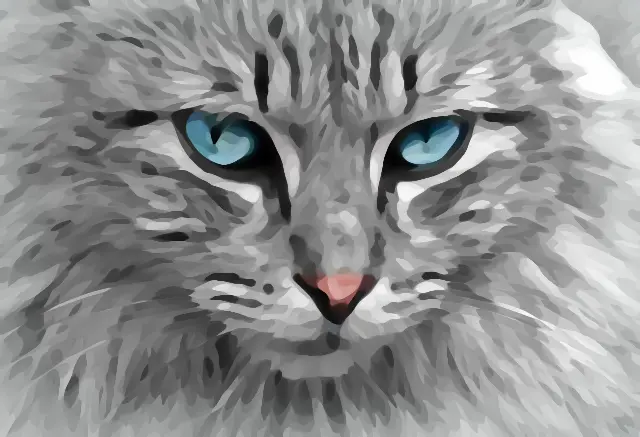Kuwahara节点#

The Kuwahara node implements the Kuwahara filter as well as its anisotropic variant. The Kuwahara filter is a smoothing filter that tries to preserve the edges in the image. The smoothing effect of the anisotropic variant is similar to brush strokes, so the node can be used to create stylized painting effects.
输入#
- 图像
标准颜色输入。
- 尺寸
Controls the size of the smoothing neighbourhood. Large values may introduce artifacts for highly detailed areas. For the anisotropic method, the larger the size, the slower the filter.
属性#
- 类型
- 经典:
A simple smoothing method that averages the local square neighbourhood of the image while preserving edges. Produces blocky results due to the square neighbourhood and provides no tuning parameters, but is faster to compute.
- 各向异性过滤:
A complex smoothing method that averages the local neighbourhood of the image in the direction of the flow of the edges, thus preserving the edges in the output. Produces painterly-like results and provides multiple turning parameters, while being slower to compute.
- 高精度
Uses a more precise but slower method. Use if the output contains undesirable noise.
- 一致性
Controls the uniformity of the directions of the edges of the image. Non uniform directions are nearly never desirable, so this should typically be increased until the user notices the result is no longer changing in a significant way. Further increases would produces worst results and increase compute time.
- 锐度
控制图像边缘的锐利度。
- 离心率
Controls how thin and directional the filter is. Low eccentricity corresponds to circular omnidirectional features while high eccentricity corresponds to thin directional features.
输出#
- 图像
标准颜色输出。
注意#
- 迭代
The filter can be applied multiple times by chaining the node multiple times. This chaining can produce more flat filtering.
- 性能
The filter can be expensive to compute for high size input and high resolution images. To improve performance, consider scaling down the image, applying the filter, then scaling it up again. This can work well because the filter already attenuates low frequency details.












